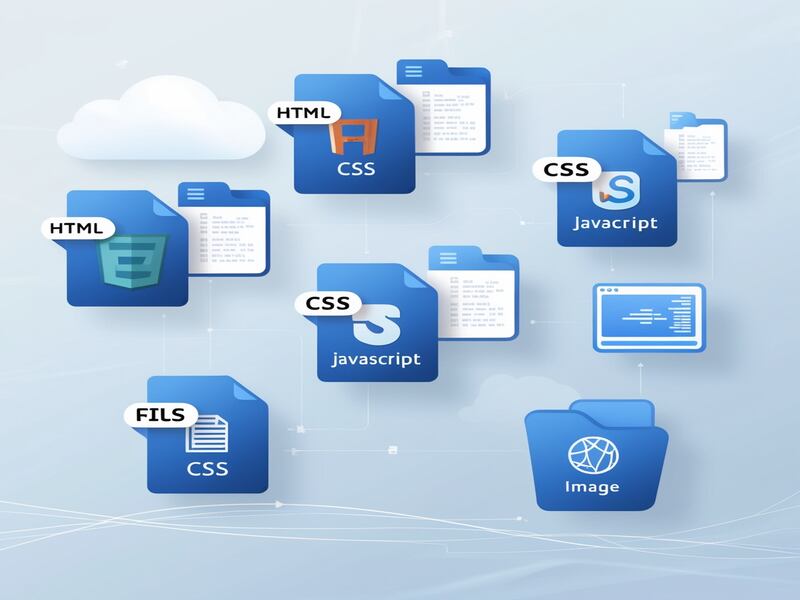IBM WebSphere Application Service (WAS) Tutorial
What is IBM WebSphere Application Server?
IBM WebSphere is a middleware tool product that allows for the administration of applications developed by Java developers using the GT language, Java two Enterprise Edition, and Java.
As an administrator, you will be responsible for managing the entire application, including servers, and ensuring that the server is configured to respond to requests from the network.
As a server administrator, you will be responsible for managing the server and its resources, ensuring that the system can respond effectively to increasing requests.
WebSphere vs WebLogic?
WebSphere is a tool developed by IBM whereas WebLogic is introduced by Oracle. WebSphere provides greater flexibility and security but WebLogic is behind in this scenario.
Both WebSphere & WebLogic offers installation on cloud.
WebSphere doesn’t have any REST API, its available in WebLogic.
In Conclusion, I can say it all depends on the company’s choice to go for WebSphere or WebLogic based on the application needs & performance.
WebSphere Application Server Administration
IBM WebSphere Application Server Administration is a middleware tool that focuses on managing Java-related applications.
The base of the tool is the WebSphere Application Server Administration VAs administration, which has different flavors for different purposes of the application.

These flavors include IBM WebSphere MQ MB server administration, process server admission, portal server administration, and e commerce server administration.
Ecommerce applications, such as Flipkart, require WebSphere E Commerce server administration.
In the server, applications are typically deployed, but for ecommerce-related applications, the entire store is deployed into the server.
To maintain these applications, a WebSphere flavor of E Commerce server administration is necessary.
Components of Application Server
The major components of the application server include the JT application and GT application. Once the application is deployed to the application server, it is important to understand the different user clients that interact with the application.
After deploying the application into the server, it is important to understand the different types of user clients that will use the application.
The web server configures with the application server using a plugin.
Topology refers to the arrangement of the Web Servicesin the web sphere.
VAs can be arranged in two ways: stand-alone topology and network deployment cell topology.
Stand-alone topology allows for the arrangement of the webservices in a closed setting, while network deployment cell topology arranges the webservices in a network deployment cell.
There are two types of software: Bass and Andy, both of which have different types of topologies.
Bass is a base software that can be installed for a number of system experts, while Andy is a package that can be installed for four or five systems. The difference between these two is based on the licensing point of view.

IBM WAS Training

Web Server & its Advantages
Web servers display web pages using two protocols: HTTP and HTTPS. When a client requests a web browser through the internet, the request is sent to the web server first, as the web service can handle HTTP and HTTP requests.
The web server has some advantages, such as identification, which identifies if a new request comes from HTTP or HTTPS. It can identify requests in two ways: static requests, which cannot change or navigate webpages, and PDF requests, which can only be read and closed in the browser.
This allows the web server to display static pages and dynamic pages, such as Gmail and Facebook.
The second advantage of the web server is maintaining status codes for client requests.
When a client sends a request to access something from the browser, it maintains some status codes whether the request is excess or not.
These status codes help determine whether the request is successful or not. Sometimes, errors are encountered when accessing a web application through the internet, which are usually errors coming from web servers only.

How to deploy Applications on web servers?
Web servers can only execute web application code and cannot handle business code due to their single nature.
They cannot create multiple instances with one installation, cannot deploy business applications because they contain only web containers, cannot store all data inside the server, and cannot serve enterprise applications.
Additionally, web servers are used for displaying static content and serving requests from the web server to the application server.
Deploying applications on web servers is crucial for globalizing them and allowing only new users to access them. For example, if an application like Gmail is developed on a laptop or desktop, it must be deployed on a server to ensure its usefulness to end users.
To deploy Java applications, only pure web services are used in the market. Tomcat is a web server that acts as an application server, not just a pure web service.
These servers are used to develop Java applications, such as JSP and HTML, which are used for non-business applications. Non-business applications are websites where there is no business logic, such as schools, colleges, or Gmail.
JSP and HTML are grouped into web files, which are .WAR files for deployment purposes. The second application is .jar, available under Java EJB (enterprise Java Enterprise Java beans).
This application is useful for developing business applications, such as banks, banks, or IRCTC. The third application is .wrapper classes star, which are used for developing business applications.

IBM WAS Online Training

Application Server
To deploy the business applications, a special server is needed, which is an application server.
This server has several advantages, including being able to deploy all J2 web applications, executing applications after deployment, providing a runtime environment for all applications, and being multi-server capable.
This allows for the creation of multiple servers as per the requirements of web servers.
One advantage of an application server is its ability to handle multiple applications within one server.
For example, if there are 100 applications, one application server can handle the requests. High availability is another advantage of an application server.
If one server goes down, another server takes responsibility for handling the request. This facility is called high availability and load balancing.
There are 4 major application service providers in the market:
Red Hat, JBoss, Apache which are not full at SME application servers. This means that enterprise applications with more critical business needs cannot be deployed on J-Boss.
Instead, applications with minimal business code can be deployed on Apache Tomcat, a semi-application service.
WebSphere and WebLogic are the full complete application services that can deploy any application.

Role of Clusters in WebSphere Application Servers
A cluster is an important group of WebSphere application servers that contains multiple application servers. These clusters have three types of features: high availability, load balancing, and scalable session management.
High availability means that if any server goes down, the application will run all servers, not just one.
Load balancing involves balancing the load from the application server.
Scalability allows for the creation or deletion of managed services from the cluster, maintaining session sessions of user data.

IBM WAS Course Price


Gayathri
Author